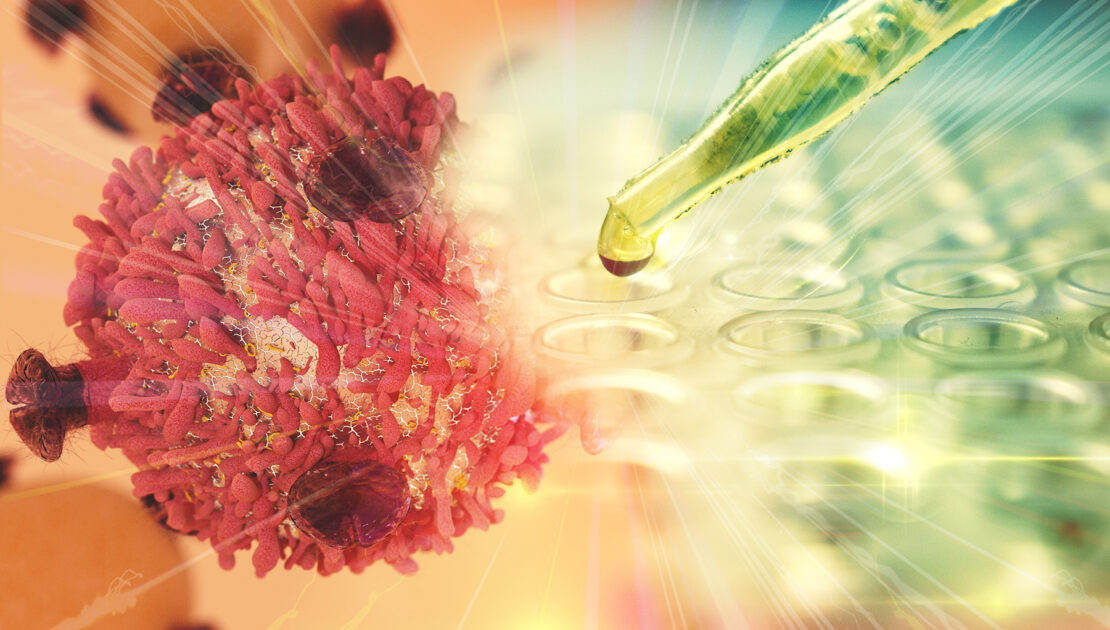
Perspectives: The Cancer Revolution
Despite recent advances in the treatment of cancer, the disease remains a leading cause of death by disease worldwide1. It is reported that one in two people will be diagnosed with cancer in their lifetime2, resulting in a stronger-than-ever drive for new efficacious therapies. Our growing knowledge of cancer enables us to develop new technologies combating different mechanisms of tumor survival while sparing healthy cells to reduce side effects. Despite substantial progress in both treatment and diagnosis in previous years, there still remains a pressing need for novel strategies to ease the disease burden.
Humble beginnings
Originally, cancer was defined as a disease characterized by cells dividing unusually quickly to form a cancerous mass or ‘tumor’. The rapid division and aggravation associated with the disease led to the development of drugs and therapies which target and kill dividing cells, such as chemotherapy and radiotherapy. The principle of these strategies involves interfering with the process of cell division, triggering the destruction of any cell which tries to divide. Commonly used drugs include cisplatin which binds to DNA and vinca alkaloids which bind to proteins required for cell division. These compounds are known as ‘cytotoxics’ as their primary function is to cause cell death.3
Although these treatments are often effective, they come with a wide range of side effects which can be detrimental to a patient’s quality of life. These effects occur because, as well as tumor cells, other healthy tissues have cells which are constantly dividing. The death of these cells leads to common side effects such as hair loss, weakened skin, anemia and immune deficiency, amongst others.
The targeted treatment revolution
In 2000, eminent cancer biologists Douglas Hanahan and Robert Weinberg published a paper seeking to change the narrative surrounding cancer treatment. ‘The hallmarks of cancer’4 set out a diverse range of characteristics which cancer cells acquire during the development of tumors, providing evidence of new areas to target with therapeutic drugs. In particular, solid tumors are complex “organs” consisting of multiple cell types and a matrix forming a tumor microenvironment (TME). Tumor cells evolve and acquire additional mutations during their “life-time” posing a challenge for many therapies also to overcome the heterogenous and blocking TME. Alternative treatments have since derived from the research including drugs targeting the growth of blood vessels and suppressing growth factors thus leading to starvation and destruction of tumors.
On the other hand, drugs targeting and inhibiting molecules needed for the rapid growth of tumor cells, such as the Vascular endothelial growth factor (VEGF) are now commonly used in kidney and liver cancers as well as in combination at other sites5.
Tumor type matters
When treating cancers, it is also essential to acknowledge the differences between different tumor types. Blood or ‘hematological’ cancers cannot be treated with surgery but are easily accessible for drug delivery. As well as being easy to reach, components of blood can also be replaced once cancerous cells are depleted. This can be achieved through stem cell transplant, allowing production of new blood cells, or antibody replacement. Although transplant is also an option following the removal of solid tumor masses, the availability of compatible organs is often a limiting factor.
Solid cancers, on the other hand, are often operable and can additionally be treated with targeted radiotherapy. This provides a first line of treatment if the tumor is discovered in the early stages of growth. Despite this advantage, if surgery fails there are often issues with delivery of drugs to the site of the tumor. In late stages of growth, cancers often spread from one tissue to another through the bloodstream in a process known as metastasis. Once a tumor has metastasized, it cannot usually be removed by surgery and often becomes difficult to eradicate with chemotherapy.
Along with the basic differences between hematological cancers and solid tumors, there is increasing recognition of the differences between tumors in different tissues. These differences shown in case of the prevalence of tumor-associated antigens can be exploited to target drugs at the tissue, thus reducing the risk of damage to other organs. Antibody therapy in breast cancer is a key example of this. Robert Weinberg himself first discovered the protein expressed on breast cancer cells which stimulates growth in response to estrogen. The ‘HER2’ protein has since become a key target for anti-cancer treatments with therapeutic antibodies generated against the protein to prevent signaling and halt tumor growth or even lead to tumor shrinkage. The anti-HER2 antibody trastuzumab was first licensed in 1998 with trials showing up to a 33% reduction in risk of death6 – saving the lives of thousands of women every year.
Challenges ahead
While these new approaches have provided novel strategies for cancer treatment, many challenges still persist. Numerous novel therapies rely on the presence of specific factors or ‘biomarkers’ to be effective, thus they only work in a fairly small subset of patients. Moreover, tumors tend to produce signaling factors in their TME that lead to a failed recognition of tumorous cells by patient’s own immune cells. This leaves behind large groups of patients who cannot access the targeted therapies and risk the harmful side effects of traditional cytotoxic chemotherapy. Cancers are also able to acquire new mutations in their DNA and evolve to become resistant to therapies through reducing their presentation of key target molecules or developing alternative strategies for continued growth.
A novel approach which promises to help combat these issues lies in harnessing the power of the immune system. The field of immunotherapy uses increasing knowledge of the natural (both innate and adopted) immune response to cancer to help enhance tumor recognition, providing potential treatments across tumor types7. Continued research in this field promises to yield powerful strategies including new adoptive cell therapies and break-throughs research with novel immune checkpoints such as Cbl-b for treating even the most challenging advanced-stage cancers, improving the lives of patients worldwide.
1 AACR Cancer Progress Report 2019. Transforming Lives Through Innovative Cancer Science.
4 Hanahan D, Weinberg RA. The hallmarks of cancer. Cell. 2000 Jan 7;100(1):57-70.
7 Cancer.org. 2021. The Current and Future Promise of Immunotherapy for Childhood Cancers. [online]

